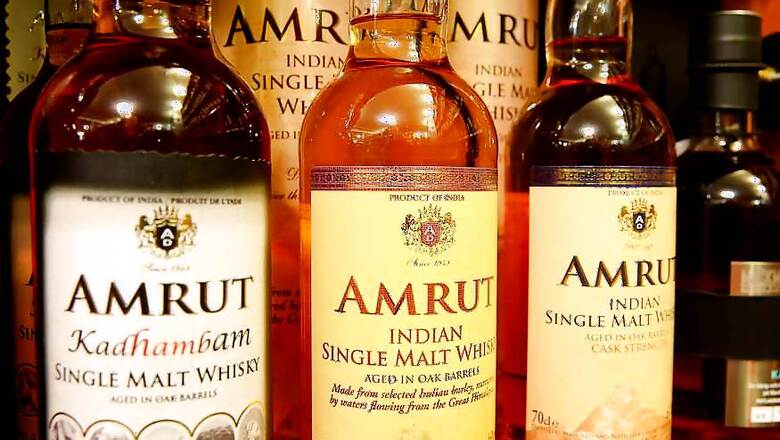
views
 It is like teaching the French the history of Bastille; the English, the Magna Carta and the Chinese, the etiquette of using chopsticks.
It is like teaching the French the history of Bastille; the English, the Magna Carta and the Chinese, the etiquette of using chopsticks.
So when an Indian company in 2004, dared to launch a single malt at Glasgow in Scotland, which is considered to be the cradle of whisky, only a few behind the venture had that flicker of hope.
The native people need only to take a sip, and close their eyes, to come at the age of whisky, and even put their finger on the place in Scotland — Speyside, Islay, The Highlands, The Lowlands — from where the drink was brewed.
Anything from outside Scotland is potable so long as it doesn’t call itself whisky.
Meanwhile, in London also, the same Indian drink submitted itself to the rigorous standards set by whisky lovers.
Bangalore-based Amrut Distilleries was started in 1948 by Radhakrishna Jagdale with modest ambitions of distilling rum and brandy — Old Port and Silver Cup — and supplying them to army canteens and a few states far south.
But not long after Amrut started distilling malt in mid-80s, the company began to fancy making the single malt. It was an ambitious move for any distillery, which doesn’t have centuries of brewing experience behind it, as is the case with almost all major single malt distilleries in Scotland.
This time it was Goa that scored the goal.
For both Amrut and John Paul, it was also perfect timing as traditional whisky lovers were slowly warming up to new tastes with the successful arrival of Japanese single malts on the scene.
But the shocker here was their Indian pedigree.
Once it made its dramatic entry into Europe, Amrut put in the hard work and research, perfecting the drink. In 2010, a new expression — Amrut Fusion Single Malt — a blend of Indian barley and peated barley imported from Scotland, struck the sweet spot.
The new phenomenon from India could not easily be blinked away. Jim Murrey, the world’s most popular whisky writer, rated Amrut Fusion as the world’s third best whisky in his acclaimed book The Whisky Bible 2010.
Murrey’s excitement was not over. Later he had to rate John Paul, that “new Indian classic,” higher than even Laphroaig and Glenmorangie.
There was a reason for that ignorance.
A key element behind the success of Amrut and later Paul John was the conscious decision of the companies not to launch single malt in their country of birth since whisky drinkers here would never believe that barley sourced from different parts of the India could live up to the one from Scotland.
So it boldly took the battle to the homeland of whisky. If they win Scotland, England and Europe, they win the world and could romp home proving a point.
Unlike the ideal conditions in Scotland, tropical climate in Bangalore and Goa, where the Amrut distillery and John single malt distillery are situated, could play havoc with the liquid gold.
Tropical climate is a double-edged sword for whisky. Due to high humidity, the angels (whisky steadily evaporates into thin air while ageing inside a cask. They call it ‘angel’s share’) could skim off much more than what they do in the frigid climate in Scotland.
One reason why Indian single malts eschew age statements in their bottles.
















Comments
0 comment